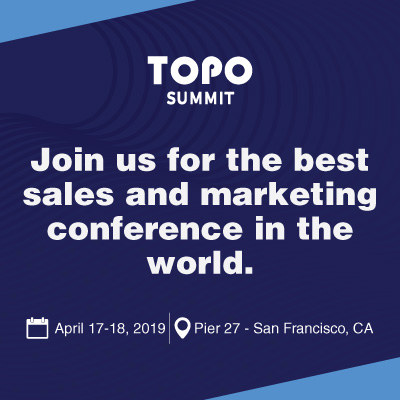In the rapidly evolving digital advertising ecosystem, brands face a tough challenge if they want to shift their ad dollars away from the technology giants of Facebook, Amazon, Apple, Netflix, and Google – collectively referred to as FAANG.
These companies have long dominated the digital landscape, leveraging vast resources and extensive user data to maintain their stranglehold. However, as we saw at the Interactive Advertising Bureau’s Annual Leadership Meeting (IAB ALM) 2025, the conversation is shifting.
The focus is now on transitioning away from the impending cookieless future to instead look at how brands can benefit from the convergence of technology and creativity. This shift presents a unique opportunity for smaller players to redefine their role in the digital advertising arena by embracing innovation, collaboration, and creative strategies.
Beyond the Cookieless Narrative: Embracing Technological Creativity
For the past few years, the digital advertising industry has been dominated by conversations around the deprecation of third-party cookies and its implications for targeted marketing. While this remains a significant concern, we can’t ignore the broader perspective. With the power of cookies waning, understanding and delivering genuine value to consumers have become key.
This shift necessitates blending technology and creativity as brands look beyond traditional data-driven approaches and instead explore innovative ways to achieve consumer engagement.
For larger companies, having a global footprint, access to walled garden data as well as sheer engineering resources will enable them to have a head start. In the genAI age it can also be seen with the likes of Meta, Google and Microsoft who have their own LLMs, which they can then develop according to their own needs.
Therefore, if smaller companies want to compete, they have to move fast and embrace collaboration. This involves moving away from generic products and services and clearly defining unique value propositions that resonate with specific audience segments. In doing so, the smaller players can differentiate themselves in a crowded market, attracting consumers seeking tailored solutions.
Furthermore, collaboration among these smaller players can lead to the development of innovative solutions that might be unattainable individually. By pooling resources and expertise, digital ad companies can enhance their competitiveness, offering consumers alternatives that stand out from mainstream options. This collective approach amplifies market presence and helps foster a community of innovation and shared growth.
Marketing Technology News: MarTech Interview with Maria Robinson, Chief Marketing Officer @ Airship
Harnessing AI to Enhance Creativity and Personalisation
Technological advancements, particularly in AI, are revolutionising content creation and storytelling. Generative AI tools empower brands to produce personalised content at scale, enabling more profound connections with their audiences. For smaller brands, this means the ability to compete with larger corporations by delivering customised experiences without the need for extensive resources. For example, in the past, preparing many versions of a creative and adjusting them for multiple markets required lots of resources. But now, with genAI, such customization costs are much lower.
AI-driven personalisation allows brands to refine audience targeting, enhancing campaign effectiveness and delivering significant returns on investment. By analysing consumer behaviour and preferences, brands can craft messages that resonate on an individual level, fostering loyalty and engagement. This technological empowerment levels the playing field, granting smaller brands access to capabilities once reserved for the giants.
Discussions are shifting from the challenges to the opportunities presented by AI and technological innovation. Industry experts underscored the necessity of embracing these changes rather than resisting them. Historically, technological disruption has been a catalyst for evolution across various sectors, and the creative industry is no exception.
Technology can enhance creativity in filmmaking, offering new tools and methods for storytelling. For example, the film The Brutalist used an AI-powered Ukrainian voice synthesizer software called Respeecher during post-production. This perspective applies equally to advertising, where embracing AI can lead to more engaging and effective campaigns. By viewing technology as an ally rather than a threat, brands can unlock new potentials in their marketing efforts.
Taking Your Digital Advertising to the Next Level
So how can smaller brands break the FAANG stranglehold and take advantage of this new advertising revolution?
Staying updated with technological trends and consumer preferences means that SMEs can adapt swiftly, ensuring relevance in a dynamic market. By embracing the AI tools on offer, brands can facilitate content creation, data analysis, and audience engagement, leading to streamlined operations and enhanced marketing strategies.
They should also work to foster collaborative networks. By building partnerships with other SMEs, brands can successfully share resources and innovative solutions, strengthening their market positions against larger competitors.
This can’t be done overnight, however. Brands must first focus on more niche markets, searching out specific market segments where they can tailor their offerings to meet unique consumer needs and differentiate themselves from generic solutions. Part of this tailoring involves prioritising authentic storytelling by telling genuine brand stories that can create emotional connections with consumers, fostering loyalty and trust.
As we look to the future, the advertising landscape is at a transformative juncture, and some of the smaller players have the opportunity to redefine their roles. By embracing technology, fostering creativity, and focusing on delivering unique value, they can not only coexist with industry giants but also help to lead the charge in an advertising revolution that prioritises innovation and consumer-centric strategies.
Marketing Technology News: The Battle Against Martech ‘Enshittification’: How Businesses Are Fighting Back






